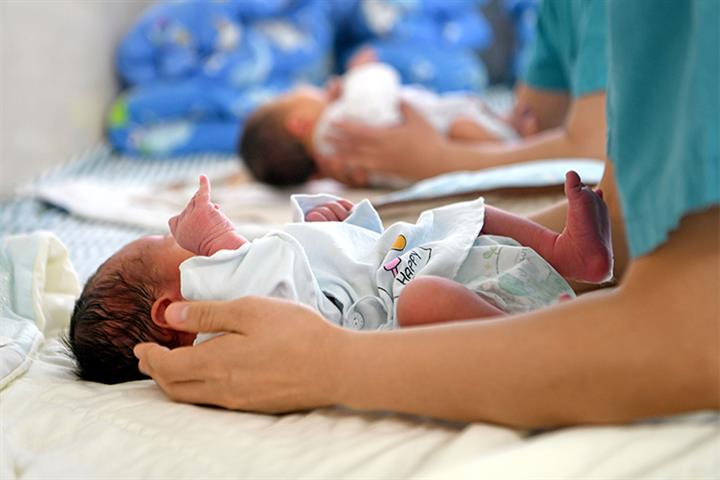 China’s Hebei Province Logs Fewer Than 500,000 Births for First Time in Over 40 Years
China’s Hebei Province Logs Fewer Than 500,000 Births for First Time in Over 40 Years(Yicai Global) March 1 -- The number of newborn children in China’s northeastern province of Hebei fell below half a million last year for the first time since it began disclosing the data in the 1980s.
Hebei welcomed 453,000 newborns last year, with a birth rate of 6.09 per 1,000 people, numbers released by the provincial authorities showed on Feb. 25. Natural births per 1,000 people fell to minus 1.71 last year from minus 0.43 in 2021, while the death rate was 7.8 per 1,000 people, equal to 580,000 deaths from its resident population of 74.2 million.
The birth rate in Hebei, a province that surrounds Beijing, has been falling since the 1980s and 90s, after peaking at 1.3 million in 1987 before going under 1 million in 1992. The province’s birth rate has shrunk 54 percent in the past five years.
In 2016, the number of newborn children in Hebei rose above 900,000 after China introduced its so-called two-child policy and reached a 25-year high of 975,800 in 2017. But that fell again to 608,400 in 2020 and 533,000 the following year.
Besides Hebei, the 10 other of China’s 31 provincial-level regions that have published 2022 population data reported a declining birth rate, while the death rate increased in most. The birth rate fell under 1 per 1,000 people in Jiangxi, Gansu, Guangxi, Hainan, and Hebei. The natural population growth rate of Henan fell for the first time since 1961, while Anhui and Gansu had their first drops in decades.
The population of the provinces of Zhejiang, Anhui, and Jiangxi and Guangxi Zhuang Autonomous Region jumped by at least 100,000 people, with Zhejiang ahead with 370,000.
Editors: Liao Shumin, Martin Kadiev